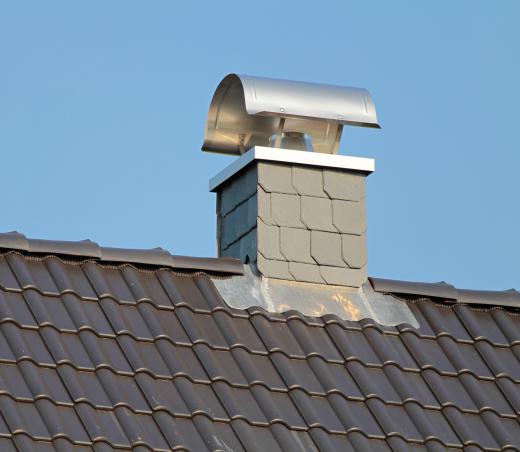An oil flue is a vent which allows the byproducts of oil combustion to be vented. Oil is burned to provide heating and energy in a number of settings, ranging from private homes to tanker ships. Proper ventilation is essential to maximize the efficiency of the oil-burning device, and to reduce the risks to human health which can be caused by exposure to the byproducts of combustion. Oil flues need to meet a number of safety standards.
The design of an oil flue is designed to fulfill several functions. The first is the venting of hot air, gases, and particulate materials from the combustion process. This requires the flue to be a specific length and width to create draft which will pull byproducts of combustion out of the flue, rather than allowing them to flow backward. The oil flue must also be heat resistant to prevent fires or damage caused by exposure to high heat.

In addition to venting flue gases and providing heat protection, an oil flue can also be part of the system which is used to reduce pollution. In this case, filters and scrubbers are installed in the flue to trap particulates and specific flue gases, so that they cannot be released into the environment. The filtration system is periodically cleaned to ensure that it will remain effective and to prevent problems caused by buildups, such as a blockage which might force flue gases back down the oil flue, causing them to put out the fire or to leak into the room around the device which is burning oil.
In structures where chimneys are already in place, an oil flue can be inserted into an existing chimney, or the chimney can be relined to act as an oil flue. This is common in a house where someone converts an old wood burning fireplace into an oil heater. Oil flues can also be run independently when a new installation is performed. For example, someone installing a basement furnace could have an oil flue installed to vent the fumes if no existing chimney is present or if a chimney will not meet safety standards.
The code for oil flues is covered in the building code. It dictates length and width requirements and spells out requirements for clearance and insulation. The building code is used to provide a set of minimum standards to contractors to ensure that basic safety issues are covered.
Ever since she began contributing to the site several years ago, Mary has embraced the exciting challenge of being a About Mechanics researcher and writer. Mary has a liberal arts degree from Goddard College and spends her free time reading, cooking, and exploring the great outdoors.

